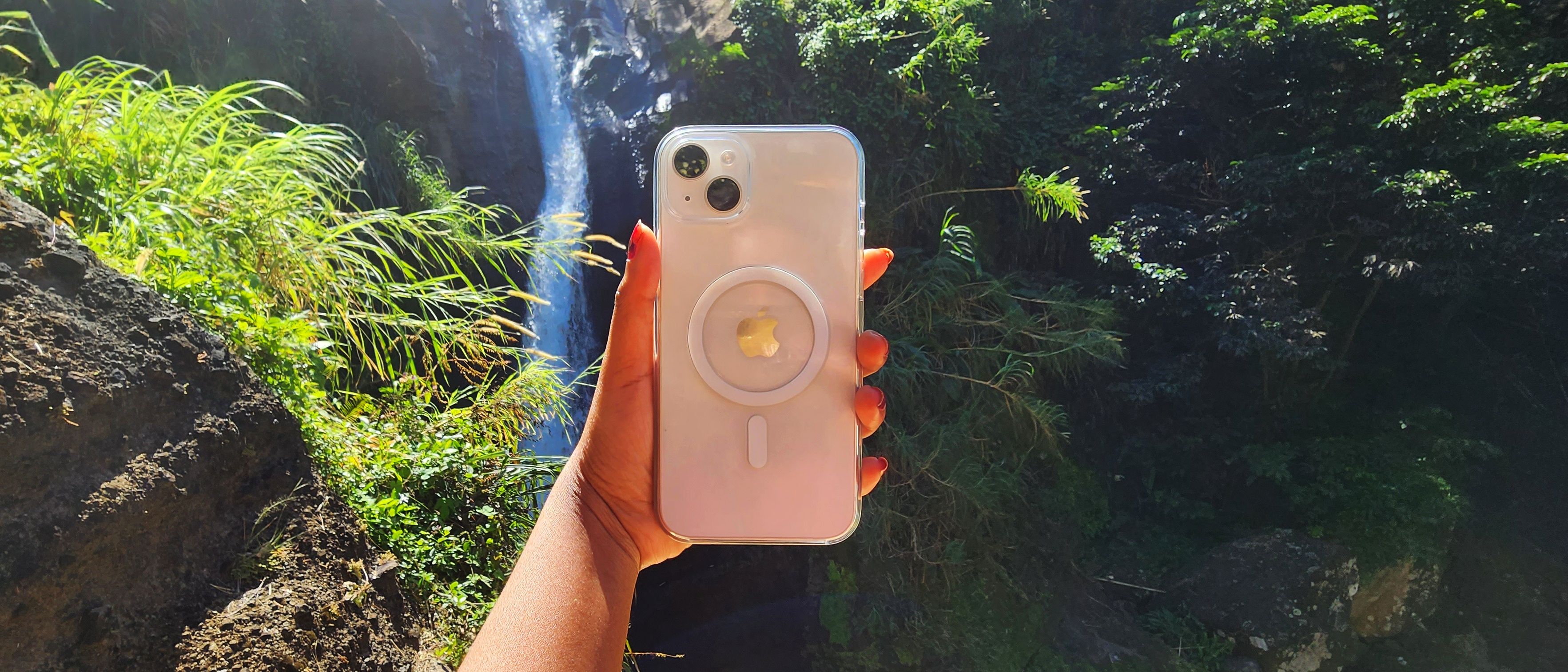Laptop Mag Verdict
The iPhone 14 Plus is the standard 14’s better-looking twin with a swankier, larger display and more impressive battery life. But like its sibling, the gen-over-gen upgrades aren't particularly exciting.
Pros
- +
A big, swanky display for a palatable price
- +
Battery life is damn good
- +
Fingerprint resistant chassis
- +
Sweet-sounding audio
Cons
- -
Display is bright, but not bright enough for sunny days
- -
Iterative upgrades
Why you can trust Laptop Mag
Starting: $899
OS at launch: iOS 16
Display: 6.7-inch Super Retina XDR
CPU: A15 Bionic chip with 5-core GPU
RAM: 6GB
Rear cameras: 12MP wide (ƒ/1.5); 12MP ultrawide (ƒ/2.4)
Selfie camera: 12 MP (f/1.9)
Storage: 128GB, 256GB, 512GB
Battery: 11:57
Size: 6.33 x 3.07 x 0.31 inches
Weight: 7.1 ounces
The iPhone 14 Plus is like the “hotter twin,” if you will. Sure, it has the same specs as the uninspiring iPhone 14, the cheapest device in Apple’s current-gen smartphone line, but it has one enviable feature that attracts more suitors — a bigger screen baby!
A few months back, Apple invited Laptop Mag to a closed press event to showcase the new iPhone 14 line. An Apple rep placed the iPhone 14 and the iPhone 14 Plus on the table side by side, but the former was a bit of a snoozefest. It’s just not that different from the iPhone 13, whether you’re looking at it physically or internally. However, the iPhone 14 Plus — sorry to hurt the iPhone 14’s feelings — caught my eye almost instantly.
The rep showcased sample videos and photos on both the iPhone 14 and the iPhone 14 Plus, and not only did visuals look more spacious on the Plus’ bigger screen, but they looked more striking, too. I couldn’t help but wonder if the iPhone 14 Plus has better color accuracy, a wider color gamut range, and more. (We’ll dive into our in-house display test results later.)
I’m also curious about the Plus’ battery life because, oof, the iPhone 14’s measly 9-hour runtime hurts my feelings. If the iPhone 14 Plus can deliver better display stats, longer battery life, and other iPhone 14-beating results, the silly $100 you’d be saving by getting the entry-level device is puny compared to the benefits you’d get from its pricier twin.
iPhone 14 Plus price and configurations
The Plus is the cheapest big-screen phone you can get in the iPhone 14 line. What do I mean by this? Well, from cheapest to priciest, the screen sizes are as follows: iPhone 14 (6.1-inch display), iPhone 14 Plus (6.7-inch display), iPhone 14 Pro (6.1-inch display) and the iPhone 14 Pro Max (6.7-inch display).
As such, the iPhone 14 Plus is the cheapest 6.7-inch option (the largest screen size you can get), and it has a starting price of $899 on Apple’s official website if you connect it with AT&T, Sprint, T-Mobile or Verizon. However, if you want to roll solo and figure out your carrier later, Apple won’t be so generous; the iPhone 14 Plus will cost you $929.
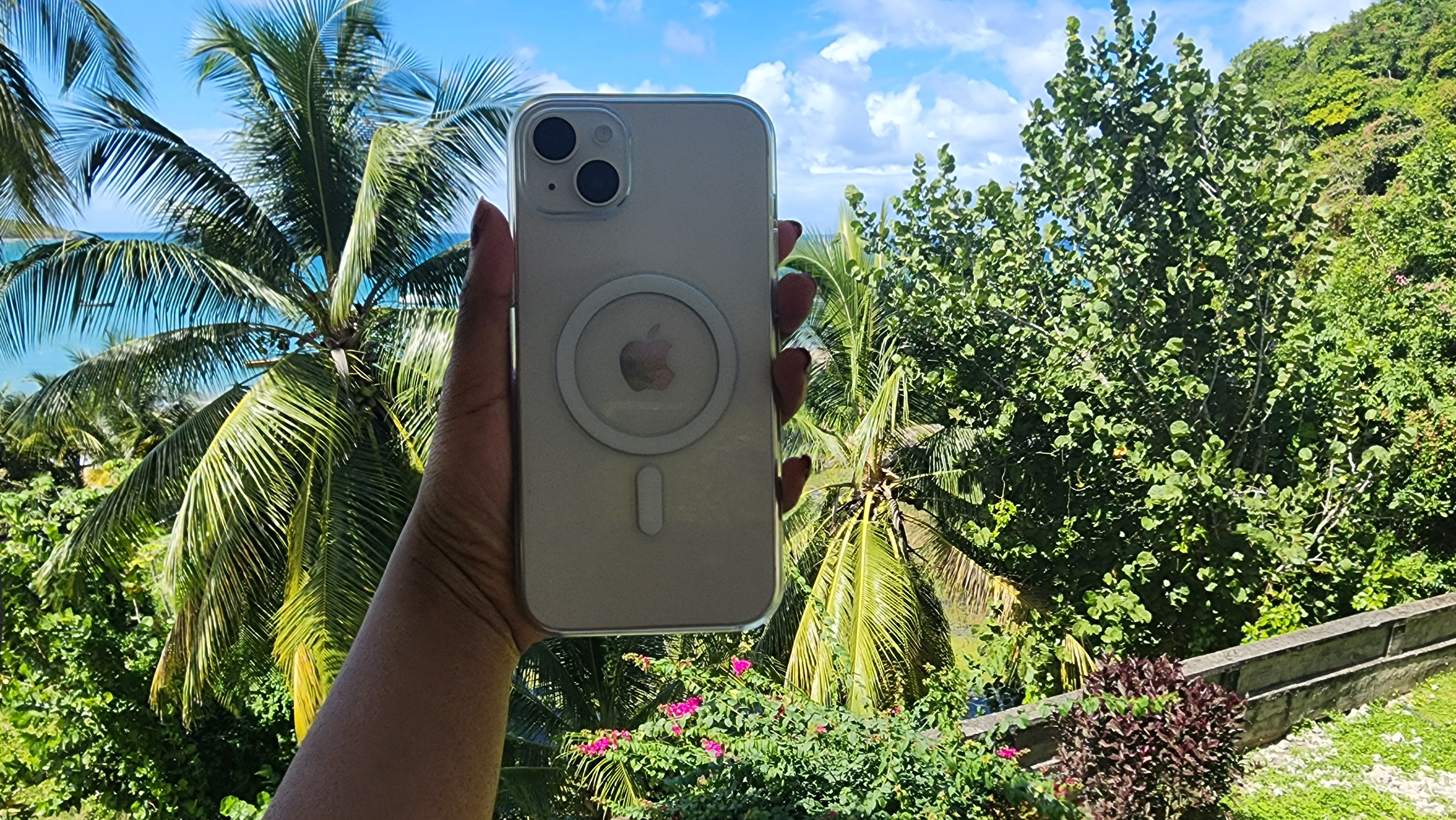
You can also hop aboard Apple’s $38 monthly installment plan, which lasts for two years (0% APR). Another way you can ease your financial burden is to trade in an old phone for a new one, earning you up to $570 in credit.
Sign up to receive The Snapshot, a free special dispatch from Laptop Mag, in your inbox.
The entry-level iPhone 14 Plus comes with 128GB of storage, 6GB of RAM, and the A15 Bionic chip from the iPhone 13 Pro (with a dash of extra graphics performance). If you love taking selfies and photos as much as I do, we recommend bumping that up to 256GB of storage, which will set you back $999. A maxed-out iPhone 14 Plus (our review unit) comes with 512GB of storage and costs $1,199.
The iPhone 14 Plus comes in five colors: Blue, Purple, Midnight, Starlight, and (PRODUCT)RED.
iPhone 14 Plus design
Call me picky, but I’m not really feelin’ any of the iPhone 14 Plus color offerings. They’re too pastel-like for my tastes, but Apple sent me my least favorite: sTaRLiGhT. Yes, it sounds pretty, but it’s just a ho-hum off-white color — bleugh!

Its aluminum and glass chassis isn’t as posh as its stainless steel-wrapped Pro siblings, but I love that it’s lighter and more fingerprint resistant. No matter how much you smear your grubby little fingers all over its body, you’d be hard pressed to find any conspicuous, sullying marks.
Although the Plus is a new entrant to the iPhone line (the mini’s been kicked to the curb), it’s aesthetic has barely changed from iPhone 13. It still has rounded corners, flat edges, a glossy logo, and the unsightly notch that Apple refuses to 86 completely. If you want a less obnoxious notch, consider getting the iPhone 14 Pro or the iPhone 14 Pro Max — they have a more attractive, interactive pill-shaped notch known as the Dynamic Island.
If you plan on enduring sandstorms, torrential downpours, locusts, and any of the seven plagues, you’ll be just fine because the iPhone 14 Plus has IP68 dust and water resistance. This means it’s dust tight and can survive liquid submergence of nearly 20 feet for 30 minutes.
One thing you must know about the iPhone 14 Plus before getting it is that the SIM tray is gone — it’s all eSIM from here on out. If you need some insight on what it’s like to set up an eSIM with the iPhone 14 Plus, check out our guide.
For this review, we’ll be comparing the iPhone 14 Plus (6.33 x 3.07 x 0.31 inches, 7.1 ounces) to the lighter base model iPhone 14 (5.78 x 2.81 x 0.31 inches, 6.07 ounces) and the heavier Google Pixel 7 Pro (6.41 x 3.02 x 0.35 inches, 7.48 inches).
iPhone 14 Plus display
As I mentioned in my iPhone 14 review, its 6.1-inch, 2532 x 1170-pixel screen just didn’t hold a candle to the Plus’ glorious 6.7-inch, 2778 x 1284-pixel display. The former, by the way, has an 86% screen-to-body ratio while the latter sports an 87.4% screen-to-body ratio.
“Ooh,” I exclaimed when I saw the Plus’ Super Retina XDR OLED display outshining the iPhone 14 on the table at the aforementioned closed press event. The colors! The sharpness! It’s a sight to behold.
I watched The Flash trailer, and I was absolutely mesmerized. As the superhero’s lightning-bolt emblem glowed on his chest, the emanating light revealed the grooves that decorated his ultra-tight jumpsuit. It’s so palpable, I’m almost certain it’d feel like snug spandex with design indentations that are fun to touch. Explosions, fiery blasts of yellow, red and smokey-gray hues, made my eyes widen due to the display’s well-balanced saturation. To Michael Keaton’s dismay, the screen is sharp enough to reveal the subtle pockmarks that decorated his chin while he wore the Batman suit.
My anecdotal experience with the iPhone 14 Plus’ display was great, but the numbers tell me that it’s actually mediocre compared to the average smartphone. According to our colorimeter, the Plus covered 85% of the DCI-P3 color gamut. On the plus side, this beats the iPhone 14 (83%) and the Pixel 7 Pro (74%), but as mentioned, it struggled to beat the typical smartphone (91%).
Now, let’s talk about brightness. I took the iPhone 14 Plus to Grenada, and as you can imagine, the sunlight that beamed down on me while I visited that tropical isle was no joke. As such, even at max brightness, I struggled to secure a taxi via the Haylup app (Grenada’s answer to Uber) — I couldn’t see anything!
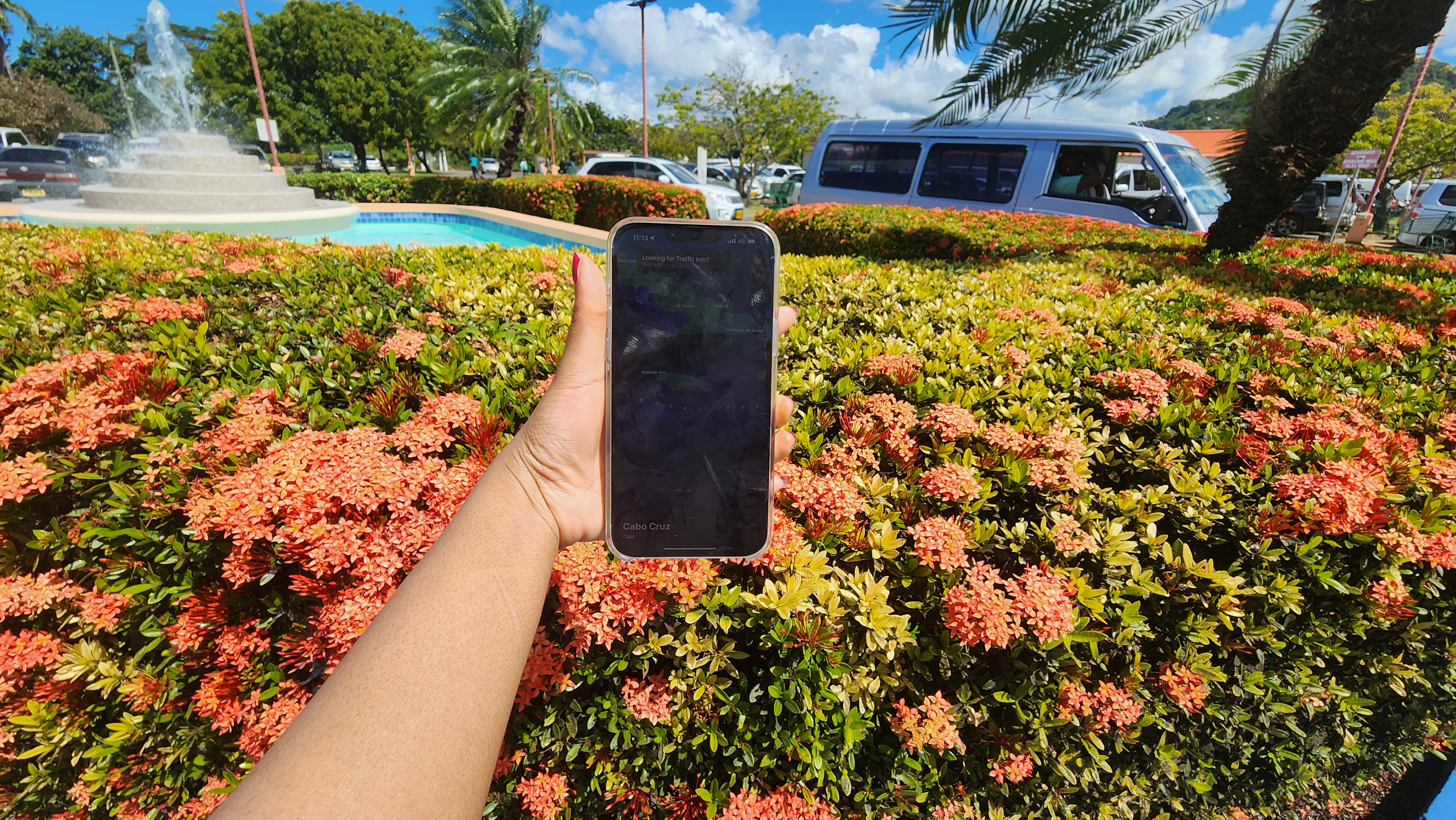
According to our test results, whether the iPhone 14 Plus had adaptive brightness on or off, the brightest it can get is 764 nits. This is slightly better than the iPhone 14 (758 nits), but pales in comparison to the Pixel 7 Pro (927 nits) and the average smartphone (879 nits).
The iPhone 14 Plus has a Delta-E color accuracy of 0.25 (closer to 0 is better), which matches the iPhone 14, outperforms the Pixel 7 Pro (0.28), and bests the average smartphone (0.26).
It’s worth noting that the iPhone 14 Plus, alongside the iPhone 14, still has a 60Hz display. Lame! If you want a phone that can climb up to 120Hz, consider shelling out some more cash for the iPhone 14 Pro and iPhone 14 Pro Max. The Pixel 7 Pro is another good choice. Personally, the 60Hz display isn’t a deal breaker for me — not even remotely. However, if you’re used to 120Hz smartphone screens, you may notice the loss of fluidity and smoothness while navigating through the UI.
iPhone 14 Plus audio
The iPhone 14 Plus’ built-in stereo speakers sound spectacular. I fired up “Bad Intentions” by Niykee Heaton, and even after jacking up the volume to the highest tier, I was surprised to hear no signs of distortion that often ruins songs. Heaton sounded more angelic than usual on the device; her vocals sounded honeyed, velvety and warm on the iPhone 14 Plus.
If you want to add an extra kick of melodic heaven to your experience, consider getting the AirPods Pro 2 or AirPods Max, which are highly compatible with iOS devices like the iPhone 14 Plus. While you’re at it, make sure to switch on the personalized spatial audio feature to achieve mellifluous ecstacy.
iPhone 14 Plus performance and graphics
No, Apple did not bless the iPhone 14 Plus with the new A16 Bionic chip (only the Pro models got outfitted with the new-gen processor), but I ain’t even mad! The last-gen A15 Bionic chip inside the iPhone 14 Plus may be “so 2021,” but it’s damn powerful and future proof because it still blows the competition out of the water — to this day.
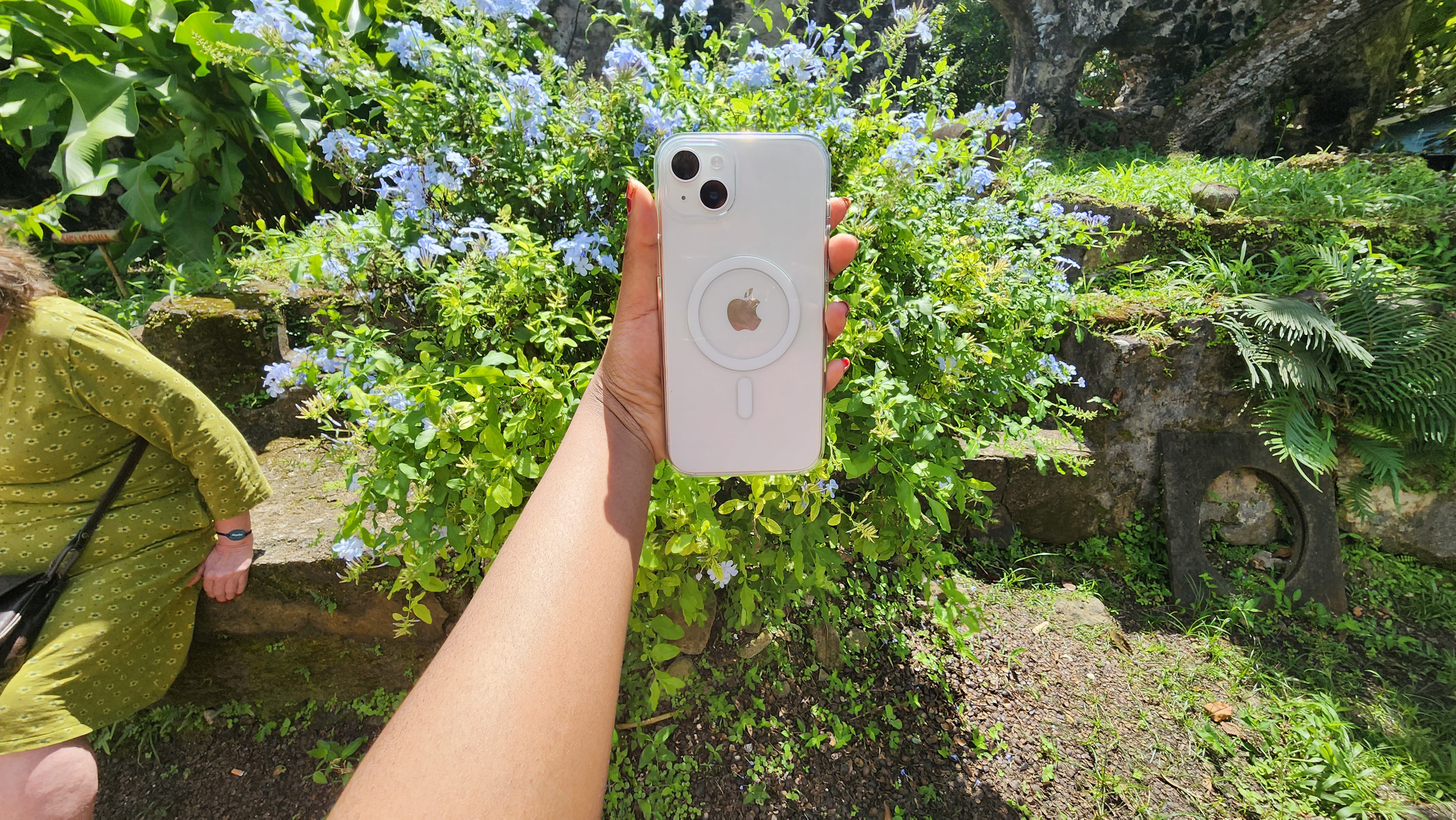
On the Geekbench 5 overall performance test, the A15 Bionic chip, equipped with a six-core CPU (two high-performance cores and four energy-efficiency cores), dragged the Pixel 7 Pro’s Tensor G2 chip (3,046) and the average smartphone (3,677) through the mud with a stellar score of 4,473. Strangely enough, although the iPhone 14 sports the same chip as its Plus sibling, it delivered a slightly better performance score (4,554).
Outfitted with 6GB of RAM, the iPhone 14 Plus didn’t even blink an eye when I challenged its multitasking muscle. It had no issues juggling 20 Google Chrome tabs, 10 Safari tabs, three mobile games, as well as Netflix, YouTube, and Spotify.
In our Adobe Premiere Rush video-editing test, the iPhone 14 Plus took only 25 seconds to complete a set of tasks. That’s faster than the iPhone 14 (28 seconds), the Pixel 7 Pro (48 seconds), and obliterates the average smartphone (52 seconds).
iPhone 14 Plus battery life
I was displeased with the iPhone 14’s paltry nine-hour battery runtime, but fortunately, the Plus turned my frown upside down. Apple boasted that the iPhone 14 Plus delivers its best battery runtime ever, but according to our in-house results, that’s not true — the iPhone 14 Pro Max takes that crown, offering somewhere between 13 and 15 hours of battery life. Still, the Plus’ battery runtime is impressive.

On the Laptop Mag battery test (continuous web surfing at 150 nits on a cellular network), the iPhone 14 survived for 11 beautiful hours and 57 minutes, beating the average smartphone (9 hours and 58 minutes). This matches my personal experience with the iPhone 14 Plus — this phone refused to die!
During a recent trip, I must’ve watched countless TikTok videos, taken a cornucopia of selfies and videos, and surfed the web like nobody’s business, but still, the Plus stuck around like a ride-or-die chick. Meanwhile, its lower-tier counterpart, the iPhone 14, only lasted 9 hours and one minute. And let’s not even talk about the Pixel 7 Pro. Eight hours and 5 minutes? Boo!
There’s still no fast-charging capabilities with the iPhone line (the best you can get is 20W via wired charging). Fortunately, with a recent EU mandate requiring Apple to include USB-C in its smartphones, that may change soon — perhaps the iPhone 15 will finally introduce the widely used port.
According to our testing, after 30 minutes of charging, the average smartphone climbed to 58% power. Within the same timeframe, the iPhone 14 Plus reached 46%.
iPhone 14 Plus cameras
To really see the iPhone 14 Plus’ cameras’ in action, check out my photo comparison piece between the iPhone 14 Plus and the Galaxy S22 Ultra. I’d also take a look at the iPhone 14 review because the cameras are exactly the same as the Plus, so I won’t be too thorough in this portion of the review. To summarize, the iPhone 14 Plus takes excellent photos, but it clashes with my personal tastes because I prefer warmer images — the iPhone 14 Plus’ images lean toward cooler tones.
Diving quickly into the specs, the iPhone 14 Plus has two 12-megapixel rear cameras and one front-facing 12MP selfie camera. No, the iPhone 14 Plus doesn’t have telephoto sensors like the pricier Pro models, which means you’ll be hard pushed to take good zoomed-in photos.
Wide camera
The iPhone 14 Plus’ wide camera now has a 1.9µm lens, an upgrade from the iPhone 13’s 1.7 µm lens. For the uninitiated, these numbers represent pixel size, which are measured in microns (µm). Larger pixel sizes typically let in more light. In theory, this means photos taken in low-light environments should deliver images with less noise. On top of this, the main camera now has a faster f/1.5 aperture.
During a recent trip to Grenada, I took a few snaps of the landscape with the wide lens. The iPhone 14 Plus’ strength is that it perfectly captures the scenery as you see it — there’s very little variation between the preview and reality.

For example, my tour guide took me to Fort Frederick to drool over the stunning, lush vista of the southwestern side of the island. Looking at the wide shot I took above, you can tell that the weather was threatening rain. The picture perfectly recreated the grayish, overcast vibes that seemed to coat the landscape. I also loved how the spotty clouds appeared to be so close, you could touch them, revealing the faintest sun rays poking through fluffy-looking puffs that decorated the sky.
Ultra-wide camera
There are no upgrades to the ultra-wide camera (12 MP, f/2.4 aperture and 13 mm focal length), so if you want to see how it performs, you might as well check out our iPhone 13 review, too. But of course, we won’t leave you hangin’ — I did happen to take a sweet shot of the Grenadian isle with the iPhone 14 Plus’ ultra-wide lens.
Interestingly enough, on a guided tour through Grenada’s best points of interest, I advised an older woman with the iPhone 14 on how to switch to the ultrawide lens (tap on the 0.5x button). You would have thought I saved her cat in a tree! She was amazed at how much more scenery she captured with the ultrawide lens compared to the wide camera because it is critical for panoramic-esque landscape shots.
Check out the difference between the wide and ultra-wide shots of Grenada’s Carenage, a stunning harbor where wealthy yacht owners park their prized possessions at the marina.

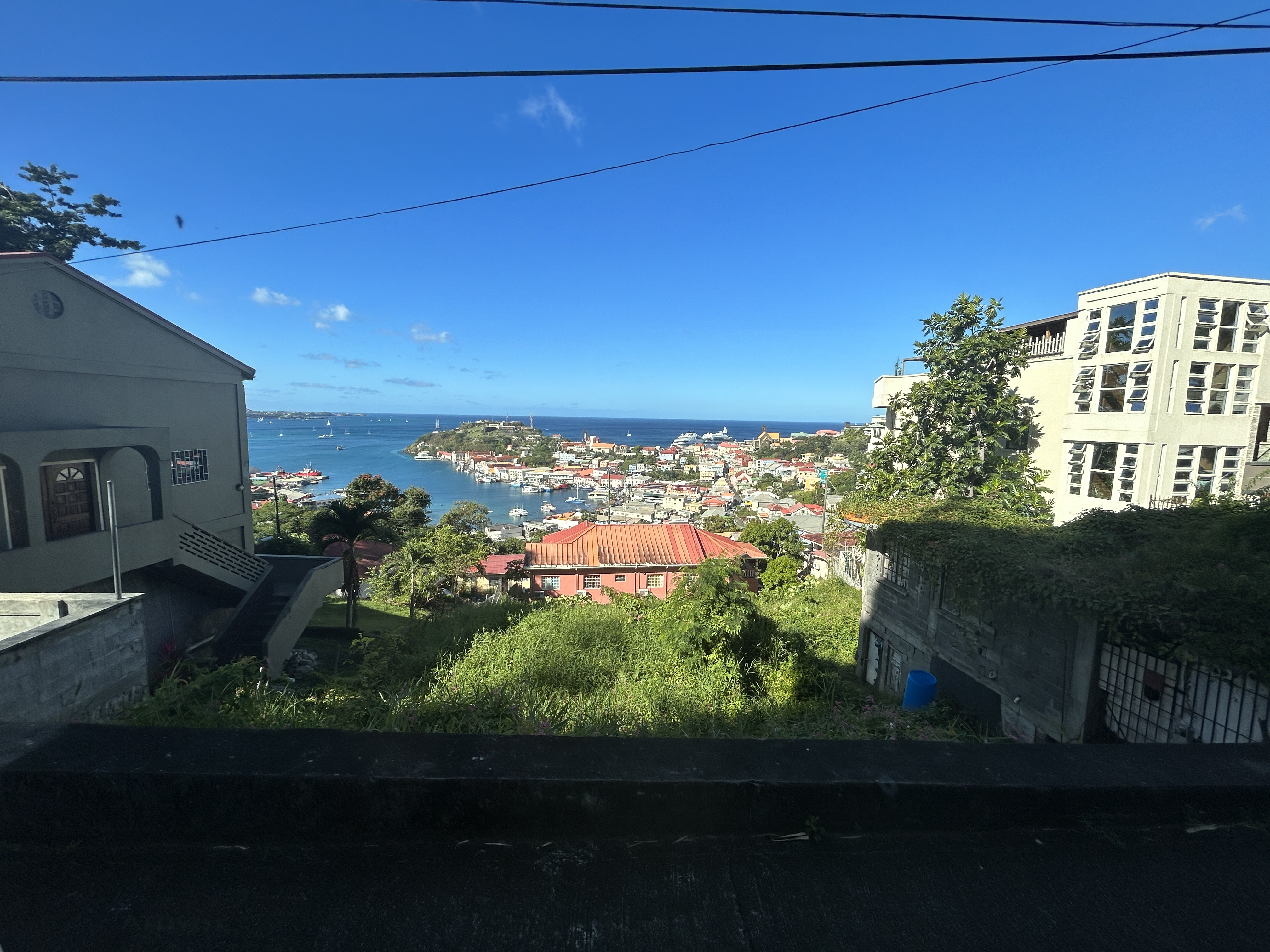
While the wide-lens shot puts the striking red-roofed building in the forefront, allowing the verdant vegetation and eye-catching harbor to bedeck the photo, the ultra-wide lens shows off the two off-white buildings that didn’t get any spotlight in the first photo. This time, the red-roofed building is no longer the star of the show; the shadowy foreground captures your attention, contrasting beautifully with the colorful Carenage in the distance.
Selfie camera
What’s new with the iPhone 14 Plus’ selfie camera? Apple finally decided to enter the 21st century — it added autofocus to the party. Also, the 12MP TrueDepth camera now has a f/1.9 aperture, a step up from the iPhone 13’s f/2.2 aperture.
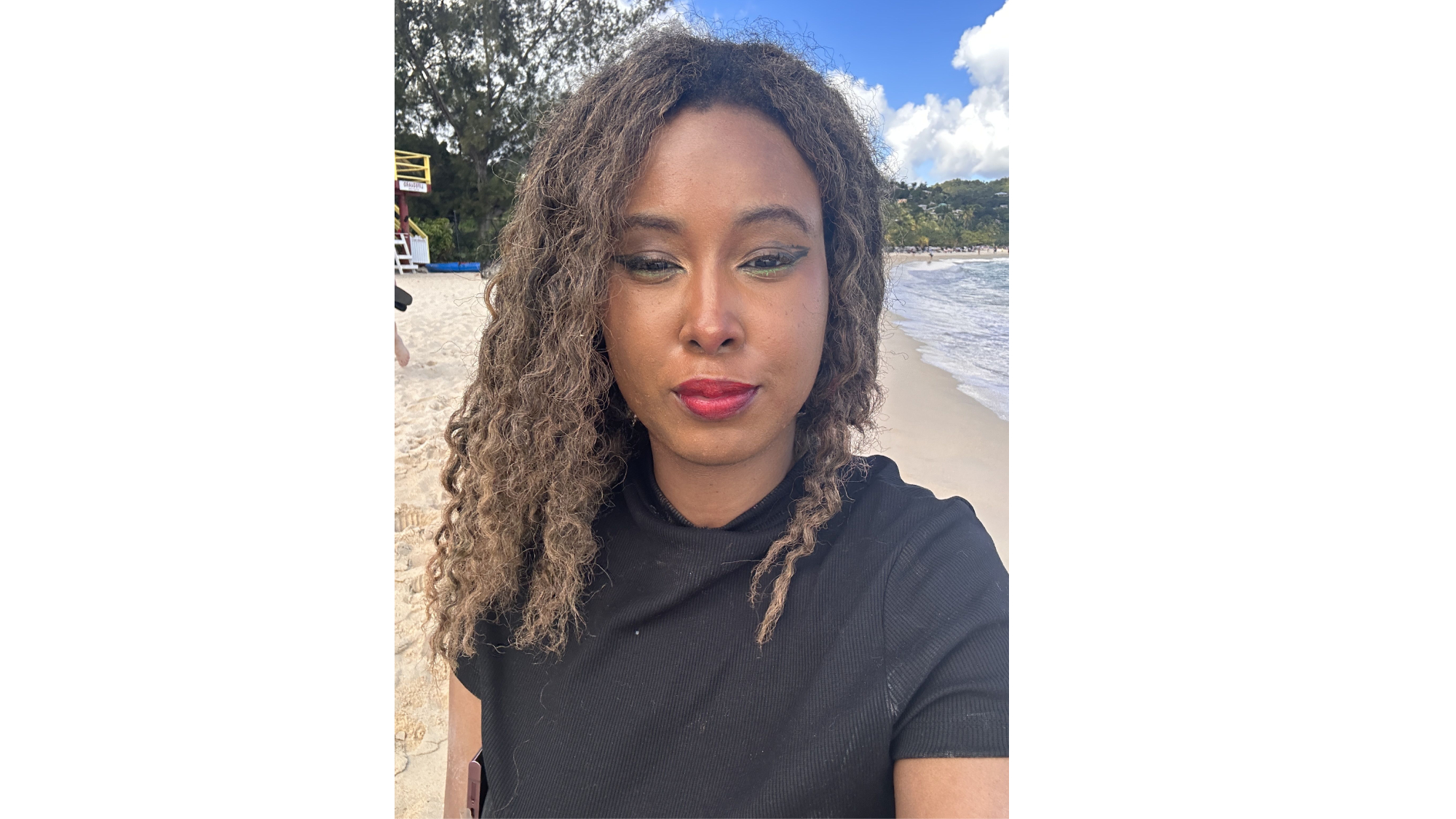
As I mentioned in the iPhone 14 review, I’m not a fan of taking selfies with the iOS device. The camera is almost too good, capturing every enlarged pore, skin bump, peach fuzz — you name it! The truth is, if you look good on an iPhone 14 selfie sans filters, feel free to change your profession to “model” because you must be one perfect specimen.
I took a selfie with the iPhone 14 Plus’ front-facing camera on the famed Grand Anse beach, and to my surprise, the photo managed to capture some patches of peeling skin that I didn’t even notice with my naked eye. My eye makeup appeared to be smudgier than I thought and my eyebrows looked caterpillar-esque — oof, the iPhone 14 Plus camera doesn’t lie!
Interested in looking better in your iPhone selfies? Check out our quick guide on how to look Instagram-ready with a few easy tweaks.
iPhone 14 Plus software and warranty
All iPhone 14s run iOS 16, which was released in early September. There are many reports from users about battery drain, Spotlight search glitches, camera-app freezing, slow keyboard pop-ups, and more.
Personally, I haven’t experienced any of these bugs, but I did notice that Apple Maps was strangely slow — so much so that I had to switch to Google Maps. Overall, however, it’s been smooth sailing with the UI.
iOS 16 welcomes new personalization features for the lock screen, enhancements to Focus, a Shared Library feature, improvements to Messages (e.g., you can now undo sent texts), Emergency SOS via satellite, and more.
The iPhone 14 comes with a one-year limited warranty. See how Apple fared in Tech Support Showdown and Best and Worst Brands, our annual special reports.
Bottom line
For the first time ever, you can snag a 6.7-inch device in the iPhone lineup without shelling out a fortune for the Pro Max. No, it’s not the cheapest phone in the family, but it’s not the most expensive either, starting at $899.
It’s the ideal option if you don’t need all the bells and whistles of the Pro Max (e.g. a 120Hz refresh rate, Dynamic Island, telephoto, and more), but you don’t want to have a device with a measly 6.1-inch screen either.
At the same time, the iPhone 14 Plus, like the iPhone 14, isn’t much of a departure from the iPhone 13. If you want more of a significant, generation-over-generation leap, consider waiting for the iPhone 15. However, if you dig the “big screen, palatable price” appeal of the iPhone 14 Plus, by all means, don’t let me stop you from getting your dream phone.
Kimberly Gedeon, holding a Master's degree in International Journalism, launched her career as a journalist for MadameNoire's business beat in 2013. She loved translating stuffy stories about the economy, personal finance and investing into digestible, easy-to-understand, entertaining stories for young women of color. During her time on the business beat, she discovered her passion for tech as she dove into articles about tech entrepreneurship, the Consumer Electronics Show (CES) and the latest tablets. After eight years of freelancing, dabbling in a myriad of beats, she's finally found a home at Laptop Mag that accepts her as the crypto-addicted, virtual reality-loving, investing-focused, tech-fascinated nerd she is. Woot!
